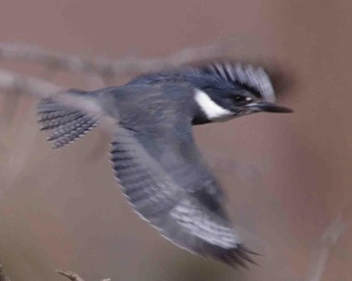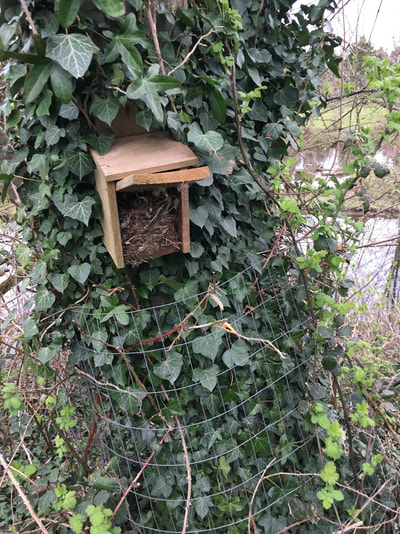|
This past March, I volunteered to help Kathy Hauff in her efforts to achieve Audubon Certification. And by "volunteer" I promised to wrangle up Eastmoreland Men's Club very own bird expert and photographer, Jan Knott, and tag along as his helper.
 Jan started birding when he was a child, receiving his first pair of binoculars to explore the bird habitats of South Africa. Birding is a little like hunting, you have to know the species and get lucky to catch a glimpse. All of his shots are with very beautiful long range digital cameras. He returns every so often with his wife Diantha. She is also a bird enthusiast and together the made documentary film Malheur: Seasons of Change a project taking over 10 years. Malheur National Bird Refuge, which made news by the ridiculous militant standoff, "supports anywhere from 5 to 66 percent of the Pacific Flyway’s migrating birds, not to mention 58 mammal species like deer, antelopes, elk and coyotes." Founded in 1908 by Teddy Roosevelt, many of us wished his ghost would have risen up for the birds and animals and taken those pretenders to the woodshed with his big stick. Diantha and Jan just laughed and decided to take the publicity as an opportunity to showcase their documentary. Playing golf with Jan I now know so much more about the bird populations, their migratory patterns. I enjoy taking photos of birds that I don't recognize to share with Jan and he can identify them with ease. I once saw a flock of birds high in the air, doing a intricate dance in V-like formation, just not resembling geese at all. When I return to turn in the scorecard, I do my best to dutifully recount the description to Jan. "American White Pelicans!" he exclaims. "Pelicans!?" What a surprise. "They live in the Northwest?" "Oh yes, they migrate south to breed on inland lakes such as Kalamath Lake" he smiled "They are probably searching for open water. You are lucky to see them." Well, we are lucky to have Jan along in our foursomes. He's one of the longest running men's club members who played alongside many of the Wolves like Benny Hughes. Of course, he has been known to lose patience when he shoots a low score, anxious to collect the winnings. I guess now that he's retired, he needs that payball cash to fund more canvas hats and bird feed. The Mission Begins: The emailsHi Kathy, Jan and I would like to clean out the birdhouses this week. Do you have any advice? Perhaps a map of were they are all located. We plan to go Tuesday evening and see what we can accomplish in one evening, then come back again as needed. Thanks, Billy Billy, You are awesome! I have been so busy lately that I completely forgot to get together with you guys but I still would like to have a meeting with you and Jan. I would bring a small step ladder because some of them are a little higher than an easy reach. I will attach a document with the locations and a map (red dots are the boxes). Please let me know if they are in the right places or if we might want to move some of them. Some of them might have come down so don’t count on them all being where the kids placed them. Thanks again-- Kathy Hauff Golf Course Superintendent | Eastmoreland Golf Course Portland Parks & Recreation NOTE: The "kids" that Kathy is referring to are boy scouts who for an eagle project helped construct some birdhouses along the sanctuary. According to Jan, it's in this wetland area labeled Restoration Project (past the driving range to the West of the 18th hole and East of the 16th hole dogleg, where the best places to look for songbirds and nesting waterfowl. The image below identifies birdhouse locations with a red dot. Billy and Jan agree to meet Tuesday.Billy I will try to get in 9 holes and see you on 18 at about 5. I will get a cart and have a ladder so just walk over to 18. I printed the map but it is black and white so the red dots don’t show up. I will try to make a color print. Jan Jan brings a special drill cleaning brush and his stepladder. Billy drives the cart and navigates.Hi Billy, It was fun working with you. Thanks for persisting when I was ready to quit. It made a big difference. We successfully cleaned quite a number of boxes. Spider webs and pill bugs were the most common occupants. A partial list of the birds we saw: Bald Eagle Mallard Great Blue Heron Crow Starling Belted Kingfisher Yellow-rumped Warbler American Robin Common Canada Goose - in pairs. Small Canada Goose - large flock The usual ducks, I didn’t count. It was late, dark and stormy so I am not surprised bird activity was low. The birds that will possibly use the nest boxes are: Black-capped Chickadees, Chestnut-backed Chickadees, House Wren, Bewick’s Wren House Sparrow I think the holes are too small for starlings, bluebirds or swallows. At least four of the boxes had remains of a nest in them No idea what bird built the nest and whether it was successful. One box was occupied by a large black spider, another by a large black rat. You evicted them both. The wood duck nest boxes over the water were not accessible to us. Too high and over water. One had fallen down, one had a roof missing and the others appeared to be stuffed with leaves, probably by squirrels. Servicing these boxes should be done by someone on the landscape staff with tall ladders or a tree trimmers lift. For future we may consider trying to attract violet-green swallows. They use nest boxes with oval shaped holes. I have a couple of these boxes I can bring and place next Sunday. The golf course has a large number of barn swallows in the summer. They nest under the eaves of buildings in a mud cup. Maybe the addition of flat planks under the eaves of the cart shed would work for them. The swallows show up later in the spring so there is time. Your idea of having bird walks and bird counts is a good one. Maybe times could be allocated on weekdays to avoid conflict with golfers. I don’t see how a path could be made that would avoid conflict during golfing hours. Thanks for the fun time, Jan Thanks Jan - it was a blast Don't forget, we also saw Giant brown recluse spiders Hungarian Black Rat Billy Billy, Brown Recluse spiders don’t live in Oregon. It was most likely a false black widow. No bitey. The rat could have been Serbian but he sure did look hungary. ODFW calls them black rats and they can climb and build nests in holes. Exterminators are calling them roof rats as opposed to what?, underfloor rats?. They mostly live in warmer places so this may be another indicator of a warming Portland, if you believe in that kind of thing. Thanks again, Jan Billy/Jan, You guys are amazing! Thank you so much for doing this and taking the pictures. I am going to include all of this in my Outreach and Education section of my Audubon certification that I am now about to turn in. The boxes on 14 are really old and I didn’t include them because they are too high and hard to get to. The rest of the boxes were put up by the scout troupe. Jan-anything you would like to do to continue either monitoring the boxes or putting up new ones would be wonderful. If you need anything or if we need to move something from a tree and put it on a pole just let me know and my crew can do that. I am a very handy woodworker so if there is a type of structure you think we might put up for other types of birds or bats just let me know and I can make it. Thanks again-- Kathy Hauff Golf Course Superintendent | Eastmoreland Golf Course Portland Parks & Recreation Mission Accomplished!
|
|



















 RSS Feed
RSS Feed